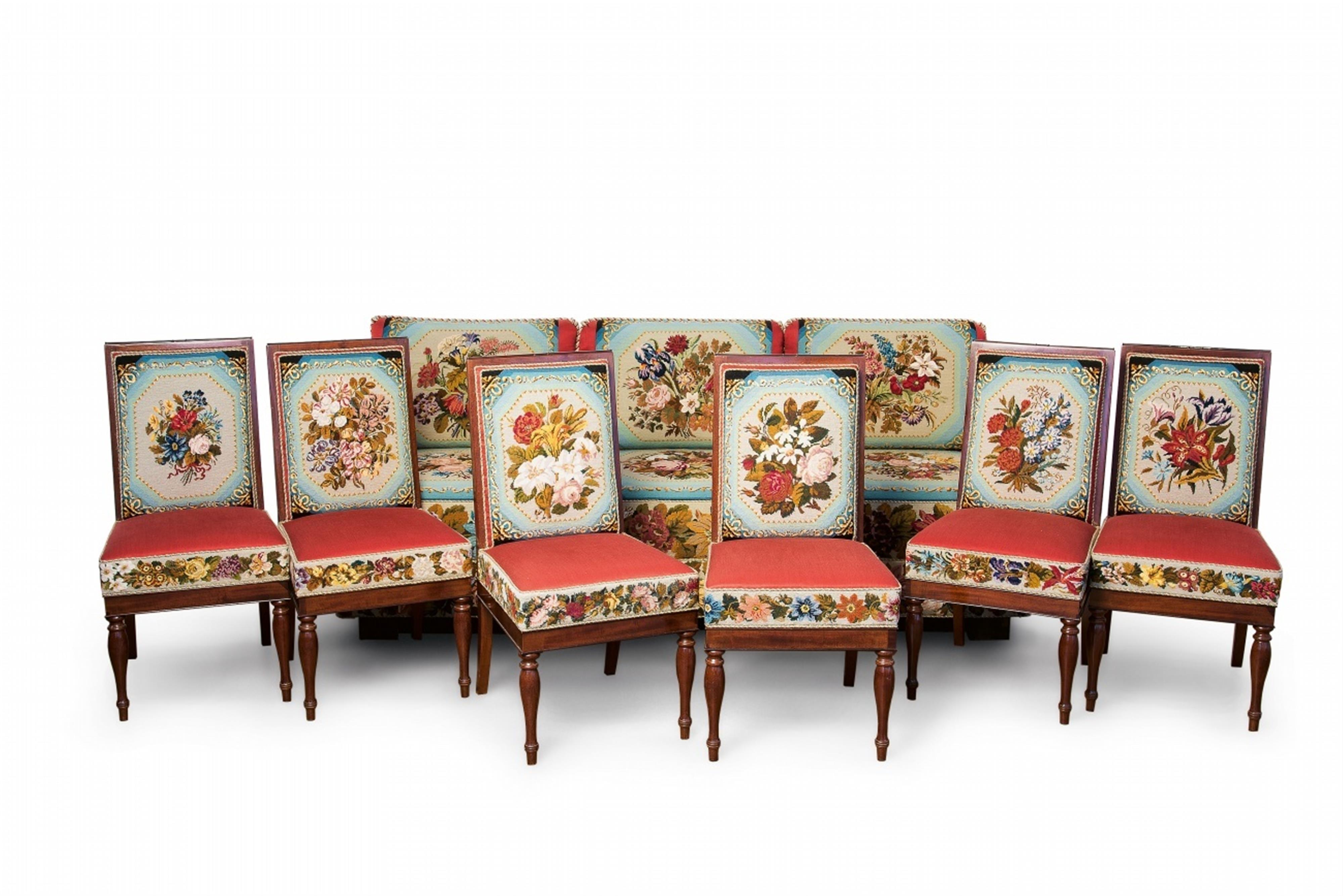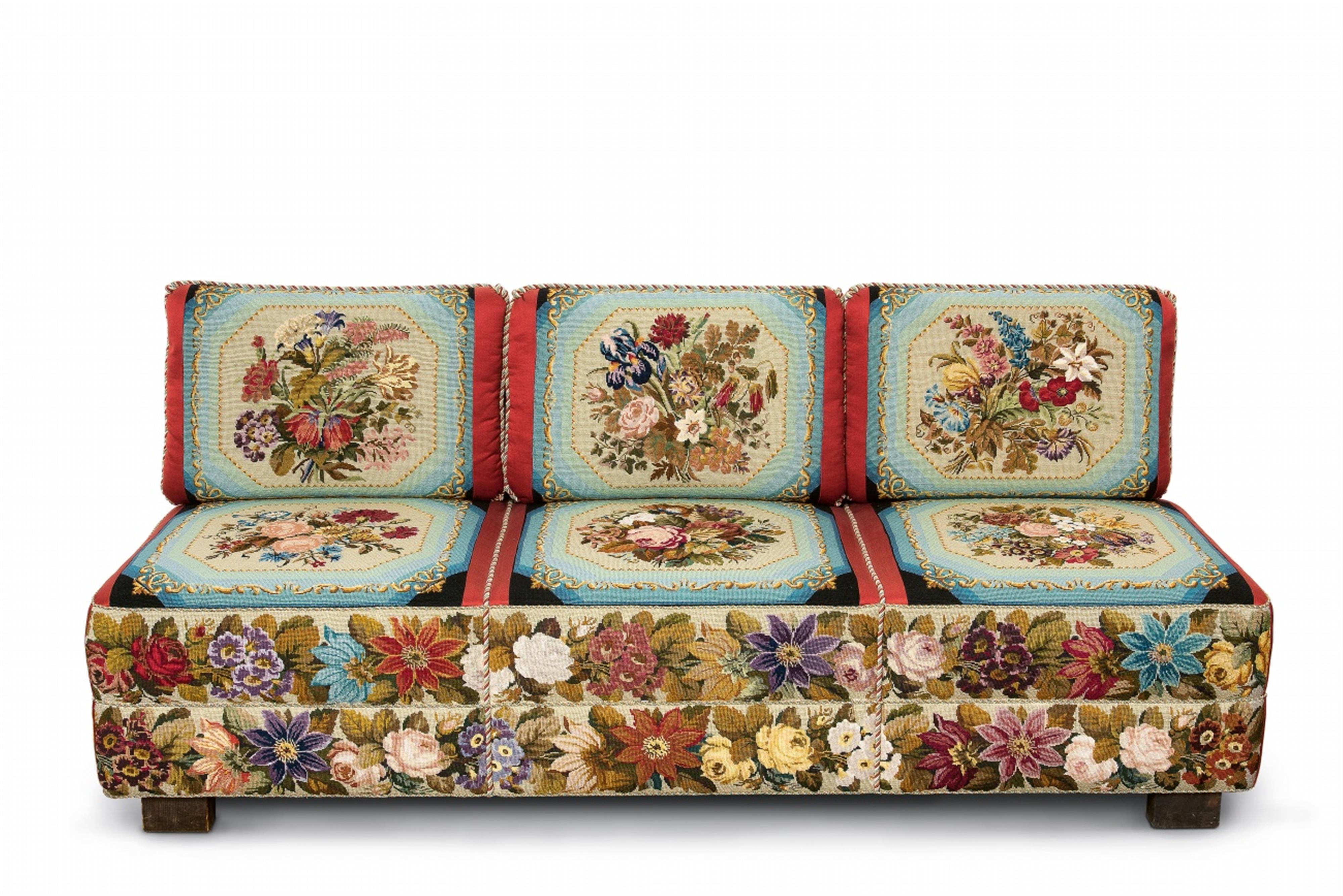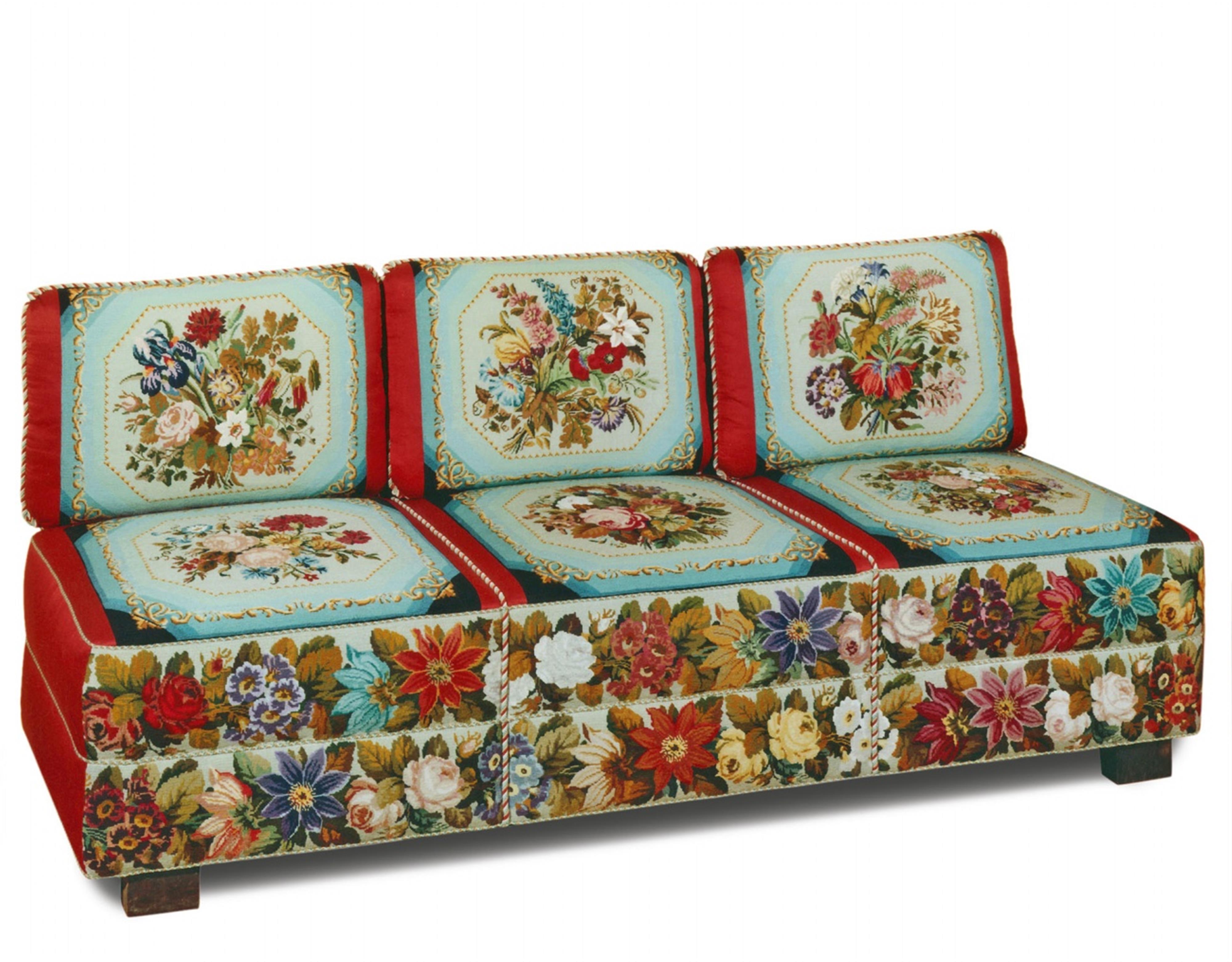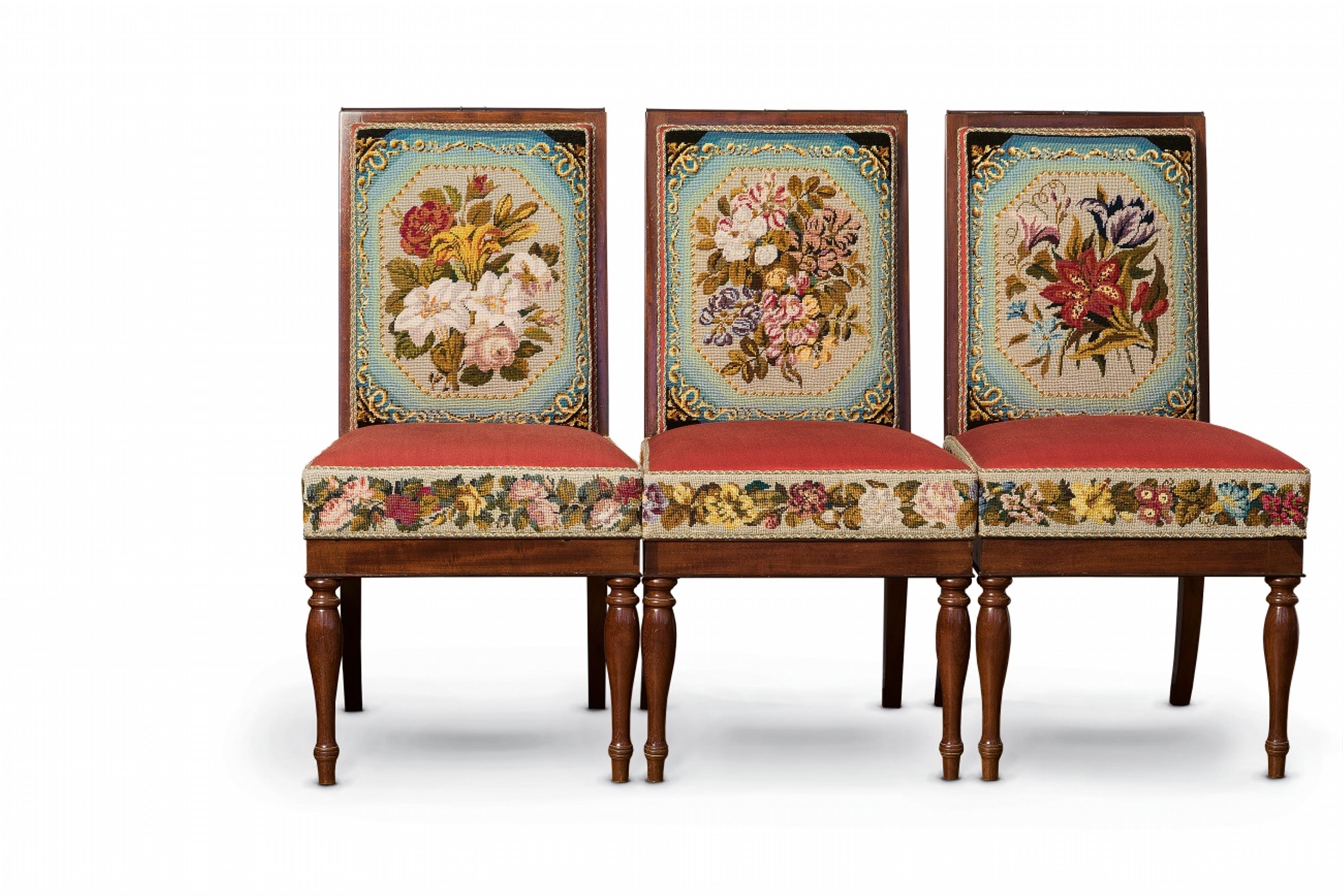A Berlin salon ganiture from the estate of Prince Wilhelm of Prussia
Mahogany frames with seat covers in gros point. Comprising one three-seat divan with three back cushions and six chairs with turned front legs and curved back legs. The backs and seats upholstered and with florally embroidered seat covers. Cleaned and restored, the red seat covers later. Height of divan 51.5, W 220, D 65 cm. H of chair 95.5 cm.
Berlin, circa 1825/30, designed by Karl Friedrich Schinkel.
According to a confirmation by Prince Clemens, this set originates from the estate of Prince Wilhelm (1783 - 1851), youngest brother of King Friedrich Wilhelm III of Prussia, and his wife Princess Marianne von Hessen-Homburg (1785 - 1846). Following his death, his daughter Princess Elisabeth, the wife of Prince Karl von Hessen, inherited the furniture. Her son Prince Heinrich von Hessen in turn bequeathed them to his wife, the later Freifrau von Bassus. At this point the set was housed in Sandersdorf Palace in Ingolstadt. The pieces then eventually came to the estate of Prince Joseph Clemens von Bayern from his aunt, the Freifrau von Bassus.
According to Prince Clemens, the furniture originates from the palace of Prince Wilhelm and his wife, by which he presumably meant Fischbach Palace in the Riesengebirge in Silesia which Prince Wilhelm of Prussia purchased in 1822. A table by Schinkel of the same provenance is shown in a watercolour of the “embroidery room” in Fischbach Palace. In the 1852 inventory, the embroidery room is listed as the living room of “her royal highness Princess Elisabeth”. Following the death of her mother, Princess Marianne, Princess Elisabeth's eldest daughter, is thought to have taken up residence in these rooms in the north wing together with her husband Prince Karl von Hessen. The rooms had previous served as her mother's private working and sleeping rooms. The embroideries which gave this room its name and set it apart from all the other rooms in the palace were probably carried out by Princess Elisabeth and her ladies in waiting. Since the 18th century it was usual, not only in Prussia, for the ladies of the court to contribute to the textile furnishings of their palaces, often in the form of seat covers, fire screens, or wall hangings. Some embroidery patterns, presumably by Silesian publishers, have survived in the archive of Fischbach Palace.
By acquiring Fischbach in 1822, Prince Wilhelm was fulfilling a long-held dream of his wife Marianne. She had already attempted to purchase the Renaissance palace, which had come up for sale after changing hands several times, in 1814. Without her husband's knowledge she had even asked her brother-in-law, King Friedrich Wilhelm III, to gift the castle to his brother in honour of his services during the German Campaign. Once acquired, the Princess continued to spend several months in the Silesian palace with her family every year, usually from July until shortly before Christmas, until her death in 1846.
Provenance
Prince Joseph Clemens von Bayern (1902–1990), great grandson of King Ludwig I von Bayern.
Literature
Cf. cat.: Interieurs der Biedermeierzeit. Zimmeraquarelle aus fürstlichen Schlössern im Besitz des Hauses Hessen, Eichenzell 2004, p. 145.








